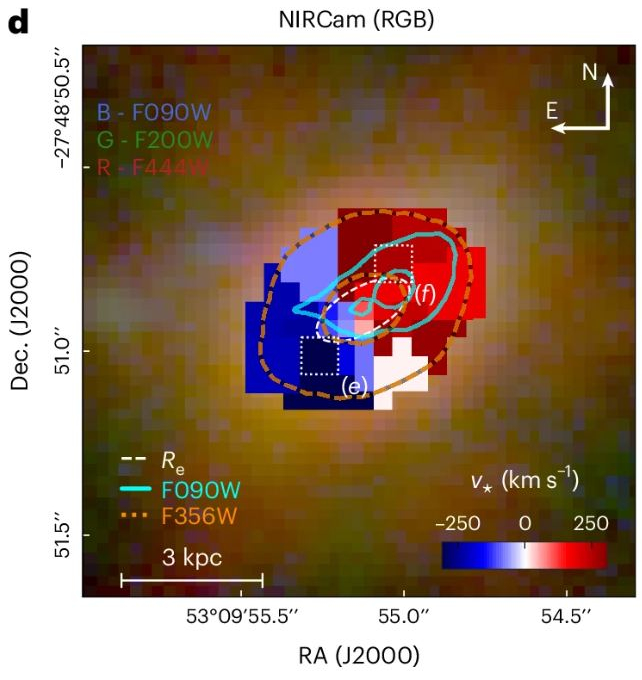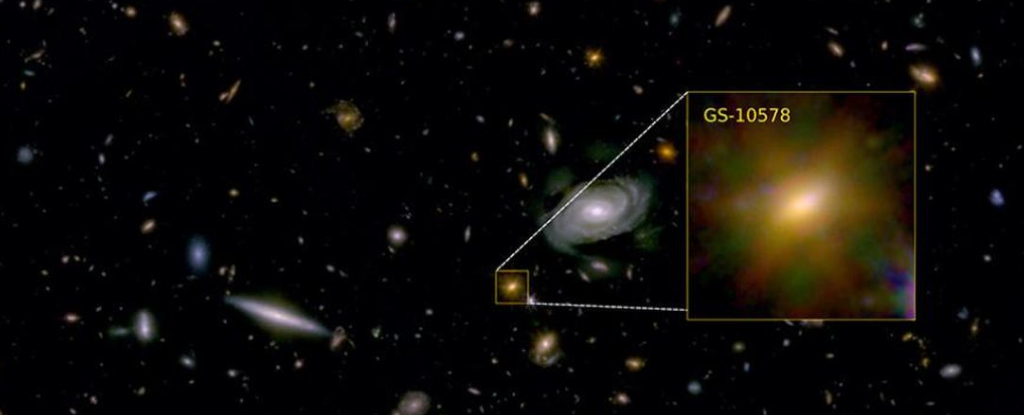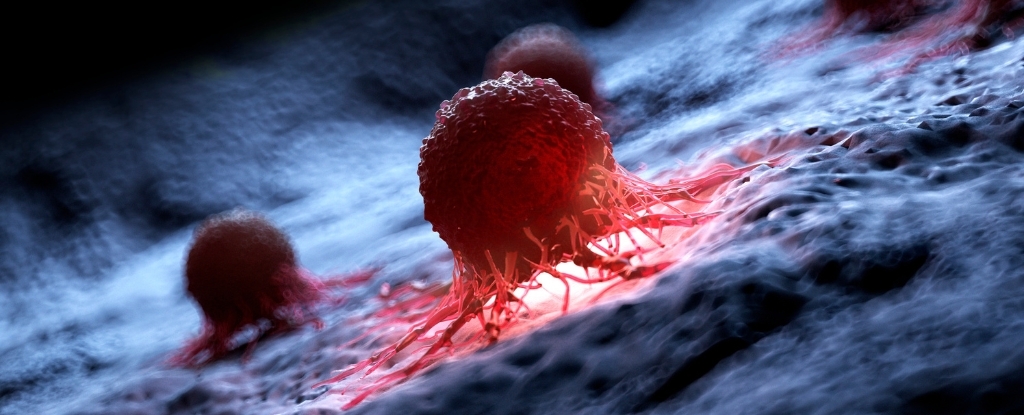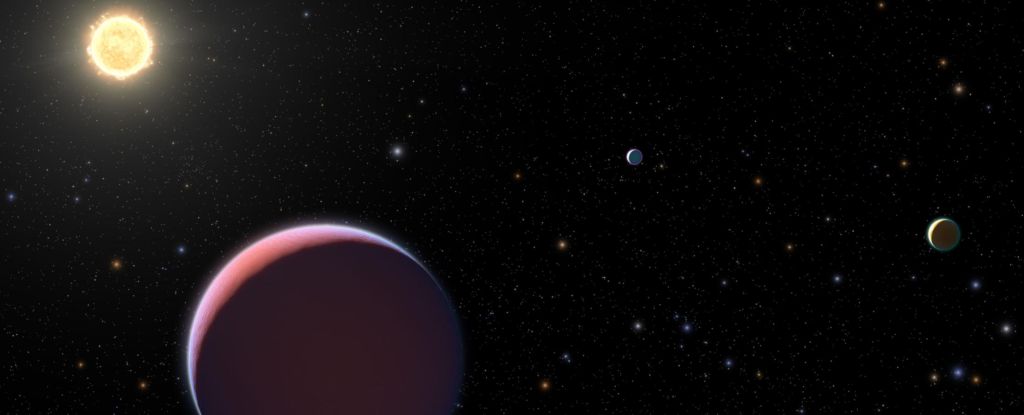When the James Webb Space Telescope was launched on Christmas Day in 2021, it faced a whole host of intriguing questions. By the time it finally launched, astronomers had a big list of targets begging for the type of detailed observations that only the powerful infrared space telescope could perform.
One of the targets was an ancient, massive galaxy that’s basically dead and forms no new stars.
The results are in, and an international team of astronomers know what happened to the quiescent galaxy.
The growth and evolution of galaxies is a key field of study in astronomy. How did we get from the Big Bang to today, when massive galaxies like our own Milky Way populate the Universe? Astronomers have learned that supermassive black holes (SMBHs) reside at the heart of massive galaxies and have shaped their galaxies in powerful ways.
SMBHs create powerful active galactic nuclei (AGN) in galaxies’ cores. As an SMBH draws material toward it, the material collects in an accretion disk. The material is heated to extremely high temperatures and gives off energy across the electromagnetic spectrum, creating an AGN that can outshine the rest of the galaxy.
AGN are powerful objects. According to theory, they have the power to disrupt the supply of cold star-forming gas and to dramatically slow the star formation rate (SFR) in their host galaxy. They blow winds of star-forming gas out of their galaxies, which slows the SFR. Astronomers call this quenching, and it’s frequently observed in massive galaxies called quiescent galaxies.
Now, the JWST has observed an ancient massive galaxy named GS-10578 at redshift z = 3.064. It’s nicknamed ‘Pablo’s Galaxy,’ and for such an early stage in the Universe’s evolution, it’s massive: it holds about two billion solar masses.
But Pablo’s Galaxy is quenched, meaning most of its star formation happened between 12.5 and 11.5 billion years ago. Many local massive galaxies are quenched, which helped propel the development of the theory of AGN quenching.
A team of scientists has presented their research into Pablo’s Galaxy in a new paper titled “A fast-rotator post-starburst galaxy quenched by supermassive black-hole feedback at z = 3.” The paper is published in Nature Astronomy, and the co-lead author is Francesco D’Eugenio from the Kavli Institute for Cosmology and the Cavendish Laboratory at the University of Cambridge in the UK.
“We found the culprit. The black hole is killing this galaxy and keeping it dormant, by cutting off the source of ‘food’ the galaxy needs to form new stars.”
Francesco D’Eugenio, Kavli Institute for Cosmology, University of Cambridge, UK
“Local, massive, quiescent galaxies stand like colossal wrecks of glorious but remote star-formation histories (SFHs) and mighty and rapid quenching, the likes of which have no present-day equals,” the authors write. “The James Webb Space Telescope (JWST) has enabled us for the first time to witness these monumental galaxies during the long-gone epoch when they arose and fell.”
“Based on earlier observations, we knew this galaxy was in a quenched state: it’s not forming many stars given its size, and we expect there is a link between the black hole and the end of star formation,” said co-lead author Dr Francesco D’Eugenio from Cambridge’s Kavli Institute for Cosmology. “However, until Webb, we haven’t been able to study this galaxy in enough detail to confirm that link, and we haven’t known whether this quenched state is temporary or permanent.”
“In the early Universe, most galaxies are forming lots of stars, so it’s interesting to see such a massive dead galaxy at this period in time,” said co-author Professor Roberto Maiolino, also from the Kavli Institute for Cosmology. “If it had enough time to get to this massive size, whatever process that stopped star formation likely happened relatively quickly.”
Pablo’s Galaxy is sometimes called a ‘blue nugget,’ a class of galaxies thought to exist only in the early Universe. Blue nuggets are massive and extremely compact, and astronomers think they’re precursors to modern quiescent galaxies called ‘red nuggets.’
Blue nuggets are experiencing ‘gas-rich compaction.’ That means that there’s a central burst of star formation that’s driven by disk instability or gas-rich major mergers. That burst is followed by quenching, which leaves a red nugget galaxy.
“As we will show, GS-10578 is, instead, already a red nugget in an advanced stage of quenching,” the authors write. They explain that it’s merging with several low-mass satellite galaxies and “is undergoing powerful, ejective feedback from its SMBH.”
The researchers say they’ve direct evidence that AGN feedback can quench star formation in early galaxies. Previous observations with other telescopes show that galaxies have fast outflowing winds of gas. That gas is hot, making it easier to see, but it didn’t provide evidence that SMBHs and AGN can quench star formation. That’s because the gas is hot, and stars form from cold, dense gas.
Pablo’s Galaxy is no different. It’s expelling large quantities of hot gas at velocities high enough to escape the galaxy completely. The SMBH and its AGN are pushing the gas out.
But the JWST made the difference in these new observations. It observed a new component of the outflowing wind made of cold gas. The cold gas doesn’t emit light, but the JWST is extremely sensitive and can detect it by the way it blocks out light from distant galaxies in the background. Critically, without cold gas, a galaxy struggles to form stars and becomes quenched.
The amount of gas being expelled by the AGN-driven winds is greater than the amount needed to form new stars.
“We found the culprit,” said D’Eugenio. “The black hole is killing this galaxy and keeping it dormant, by cutting off the source of ‘food’ the galaxy needs to form new stars.”
These are exciting results, but the authors caution that this is just one galaxy. “GS-10578 represents a unique opportunity to study how the most massive galaxies in the Universe became – and stayed – quiescent,” the authors explain in their research.
“Even though we cannot draw general conclusions from a single target, we show that AGN feedback is capable of powering neutral-gas outflows with high velocity and high mass loading, sufficient to interrupt star formation by removing its cold-gas fuel.”
There are also still outstanding questions. Other galaxies similar to Pablo’s Galaxy also show that outflow winds of cold gas could be key to galaxies’ quenching.
“How exactly these outflows are coupled with the AGN is not yet clear,” the authors write. They explain that only a census of similar galaxies can tell us whether these strong ejections of star-forming gas are a key mechanism for causing quenching or if the ejection of gas is merely episodic.
The JWST also answered another outstanding question about quenched galaxies. Our theoretical models showed that when a galaxy’s star formation was quenched, it was a turbulent event that violently destroyed the galaxy’s shape. Pablo’s Galaxy still displays the stately disk-shape of an untroubled galaxy. Its stars are moving in a uniform, predictable way.

The JWST is working exactly as intended. By bringing the ancient Universe into view, it’s answering many longstanding questions in astronomy, astrophysics, and cosmology.
“We knew that black holes have a massive impact on galaxies, and perhaps it’s common that they stop star formation, but until Webb, we weren’t able to directly confirm this,” said Maiolino.
“It’s yet another way that Webb is such a giant leap forward in terms of our ability to study the early Universe and how it evolved.”
This article was originally published by Universe Today. Read the original article.





